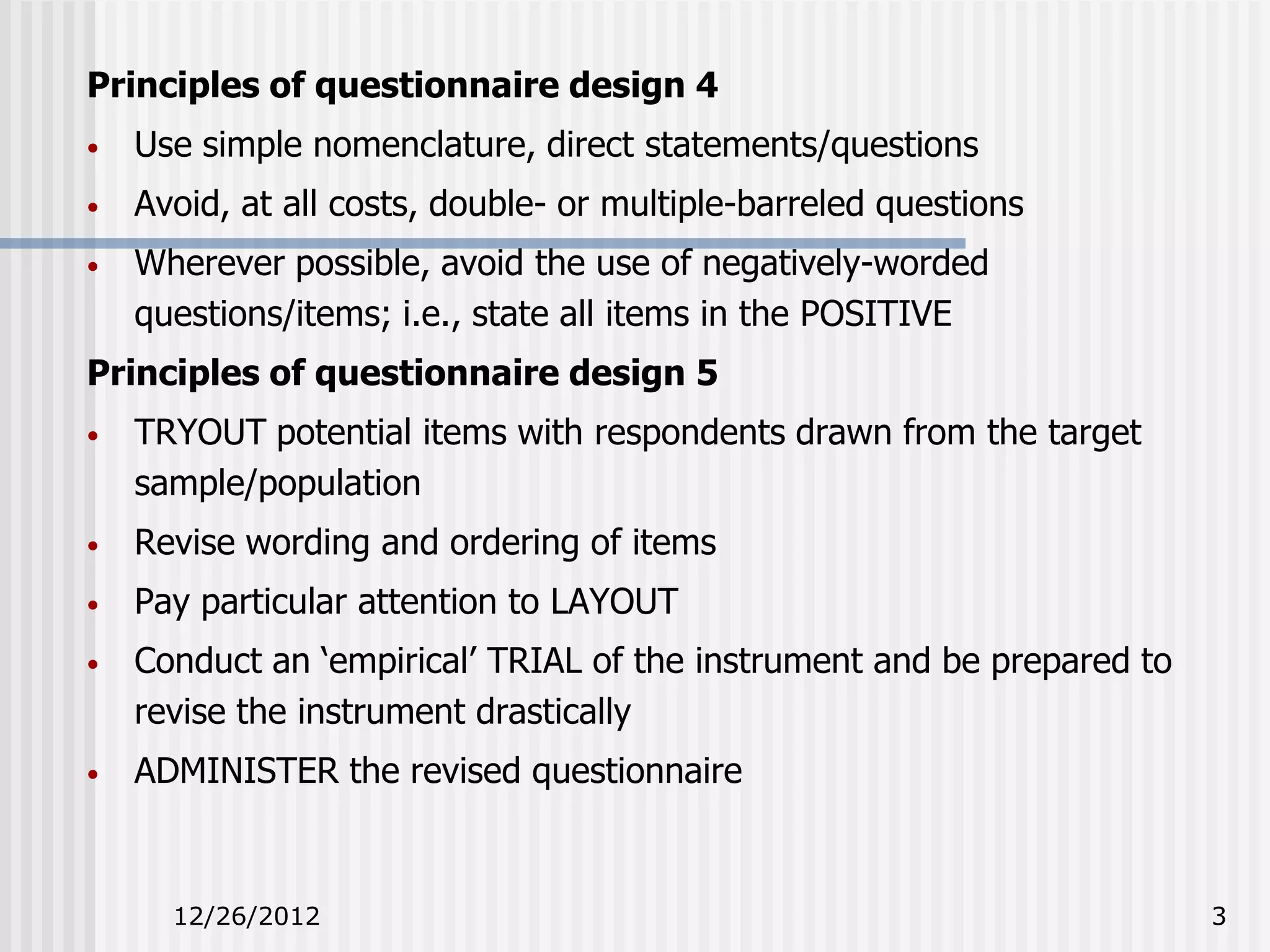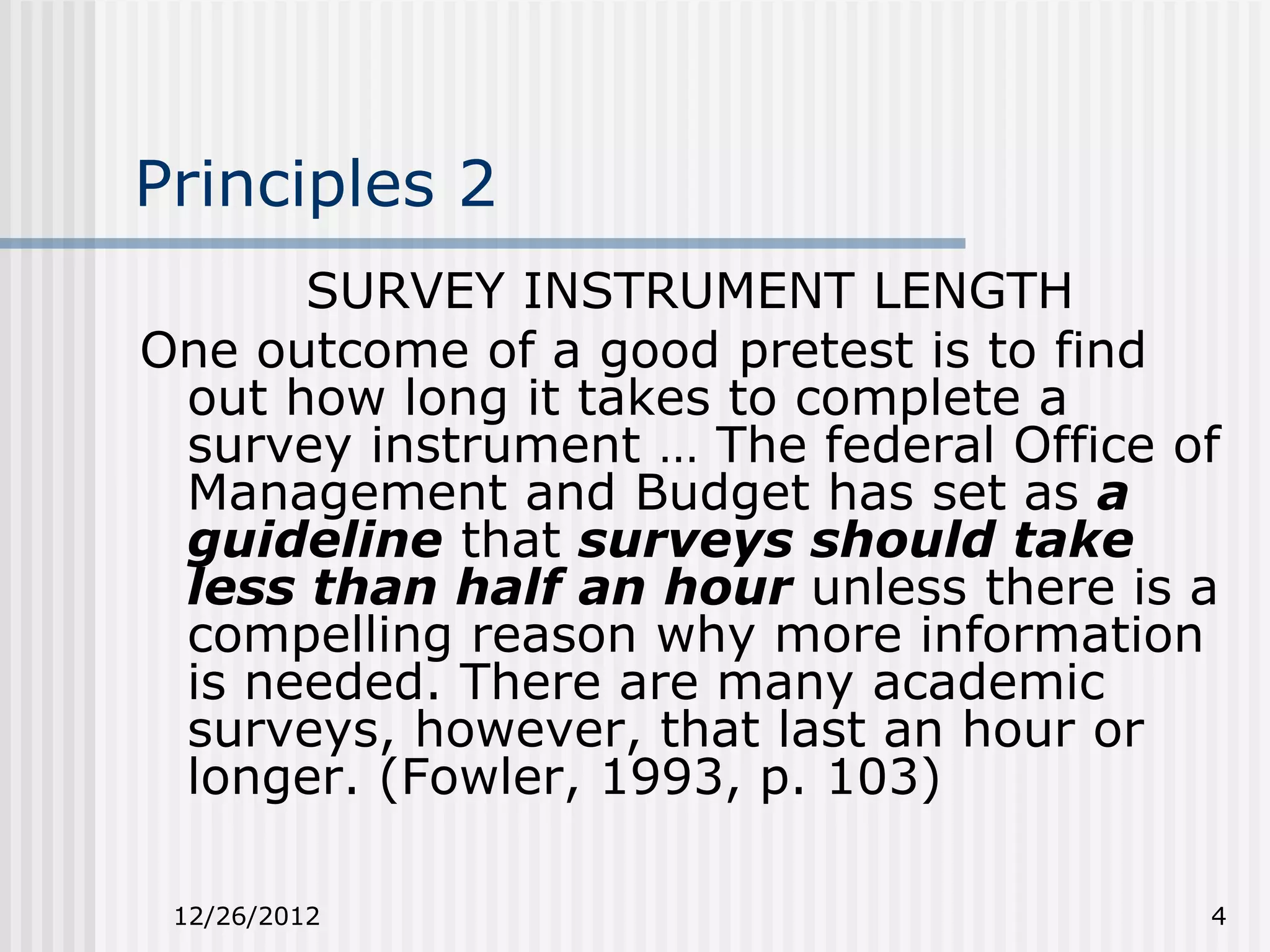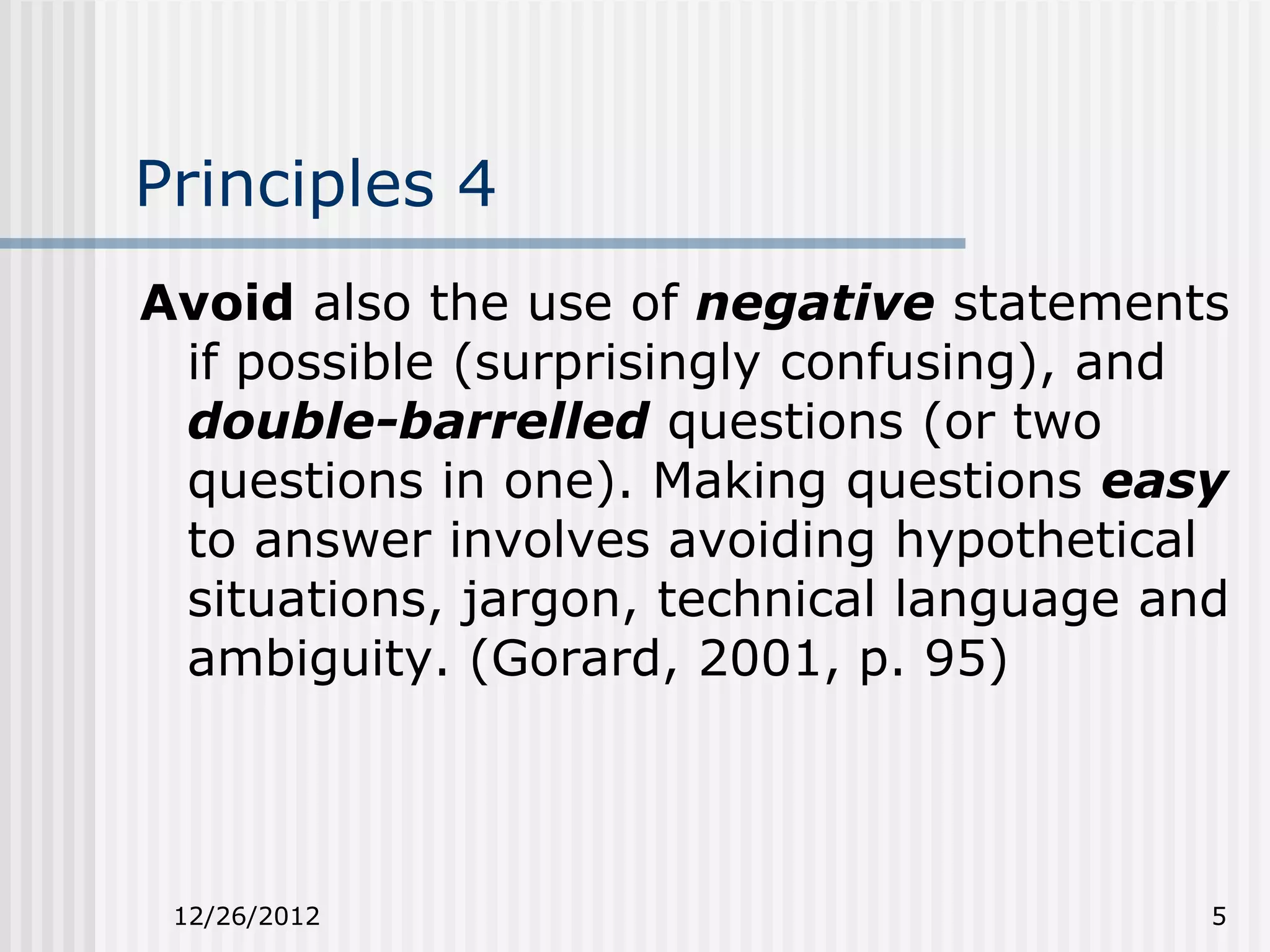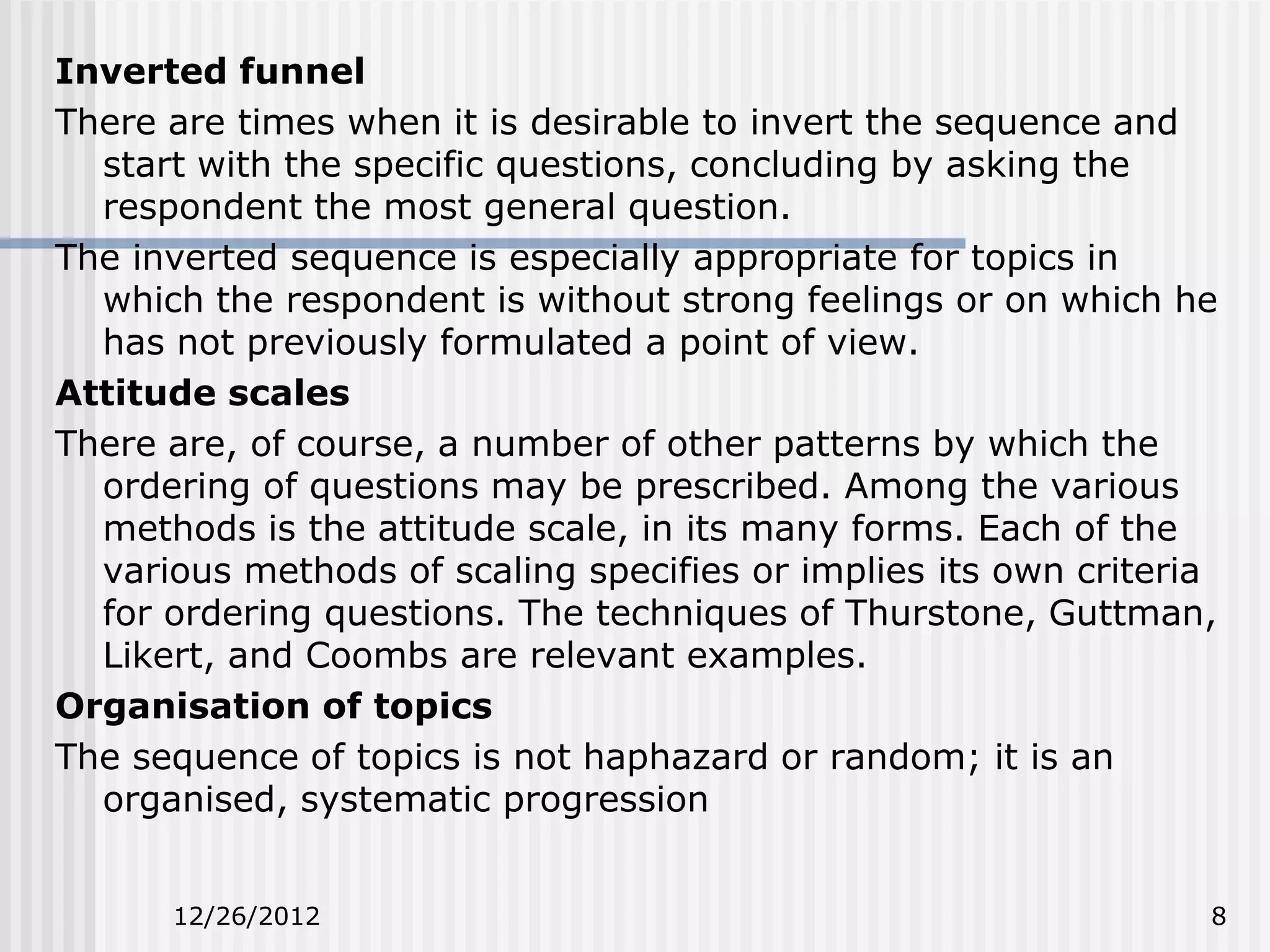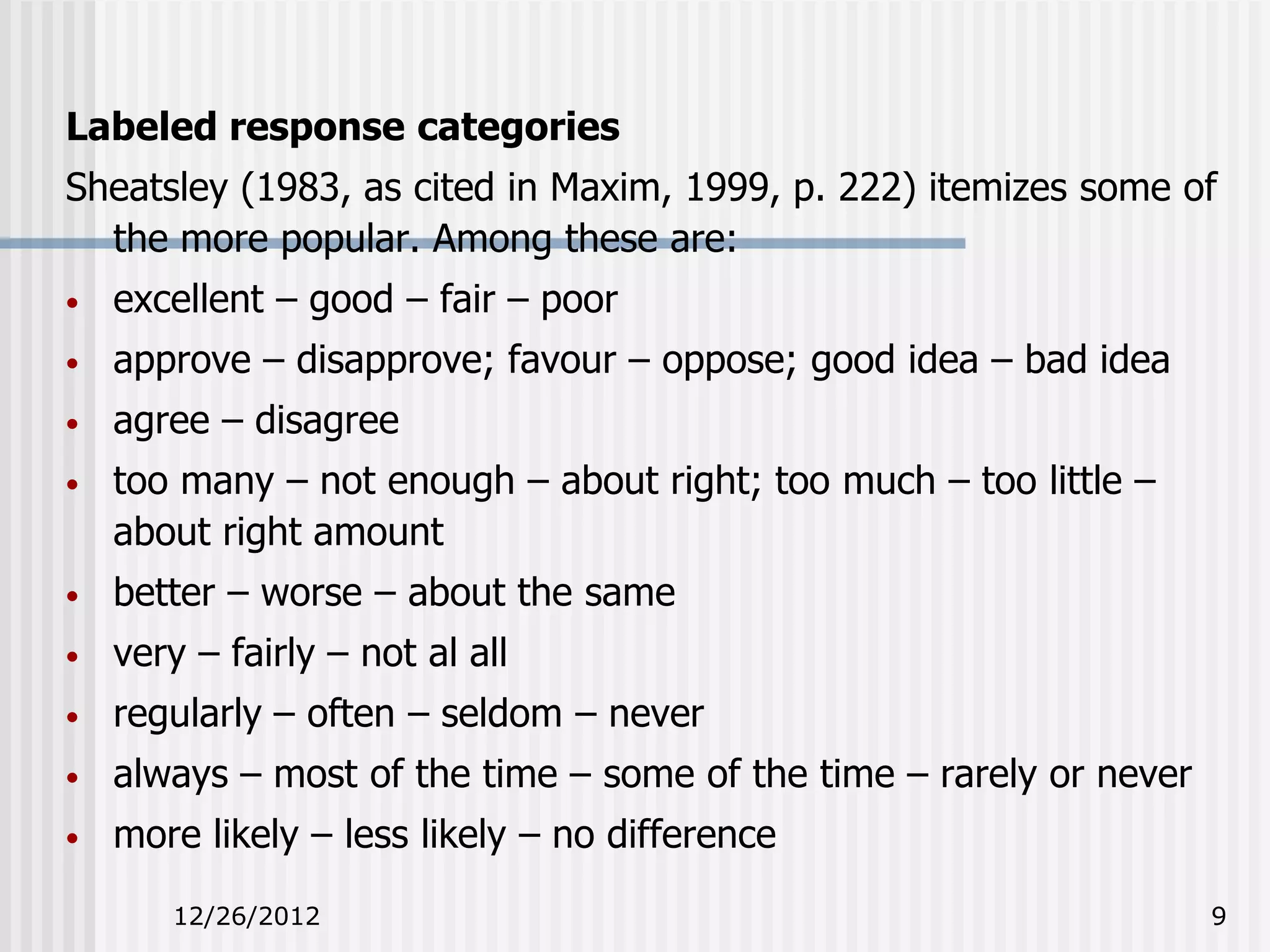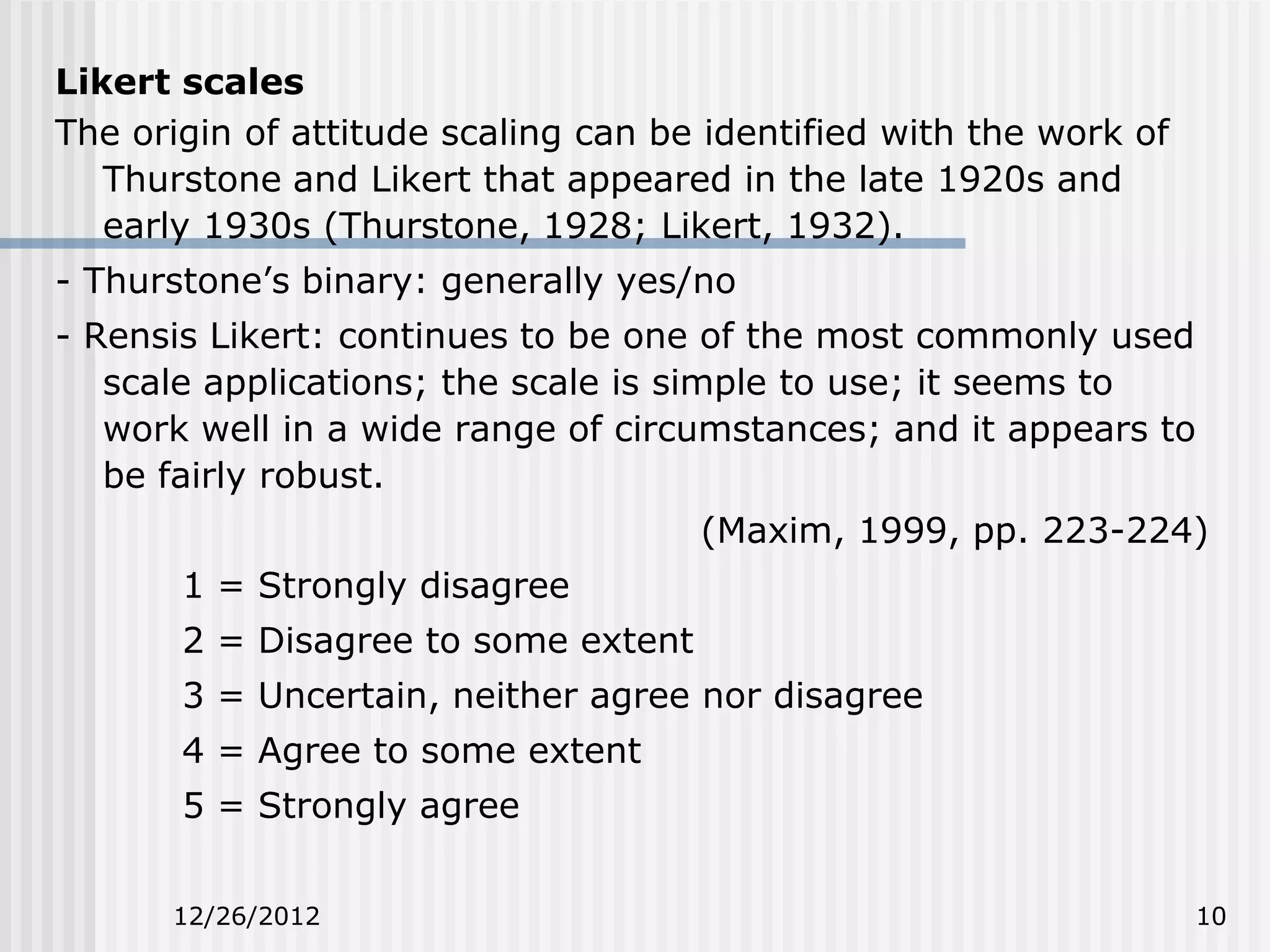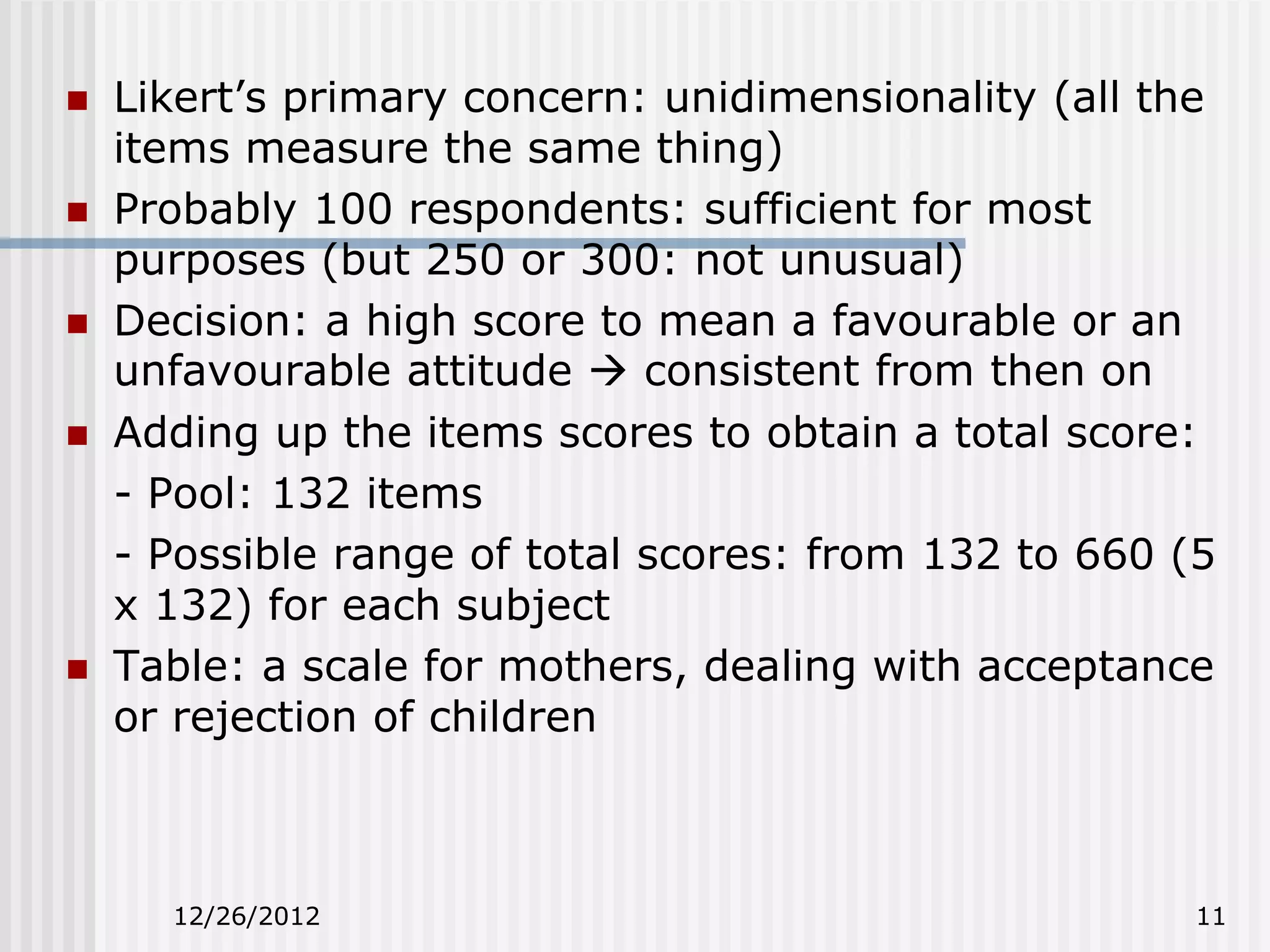The document discusses principles for designing effective questionnaires. It recommends limiting questions to those most relevant to the research questions, pre-testing questions on sample populations, and keeping questionnaires brief, typically under 30 minutes. It also advises avoiding double-barreled or negatively-worded questions, and carefully considering the ordering and structure of questions.
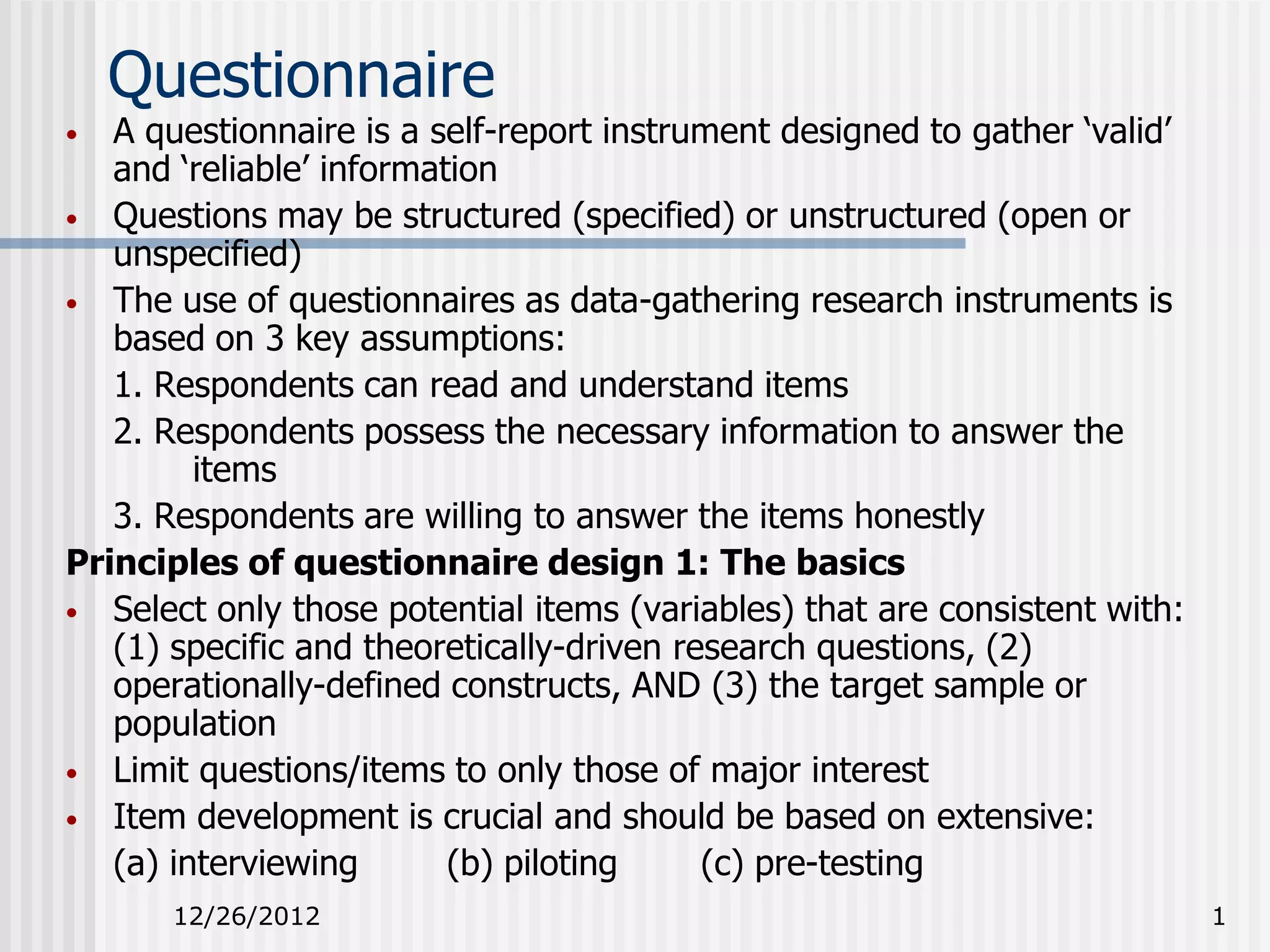
![Principles of questionnaire design 2: Constraints
• Time:
- Not more than 30 minutes for adults (about 15 mins for mail
questionnaire)
- Not more than 10-15 minutes for children and adolescents
• Sensitivity or delicacy of content
• Design
• Avoid ‘non-response’ bias
- The attributes of a well-designed questionnaire do not arise naturally
out of the process of questionnaire construction, but are the result of
careful developmental work
Principles of questionnaire design 3
• Decide major research question(s) variables and their possible multiple
indicators
• Decide key demographic and classificatory variables [e.g., age, sex,
education, occupation, residential (or work) location, etc.]
• Design response categories to avoid potential ‘non-response bias’
12/26/2012 2](https://image.slidesharecdn.com/descriptivedesignquestionnaire-121227004105-phpapp02/75/Descriptive-design-questionnaire-2-2048.jpg)
